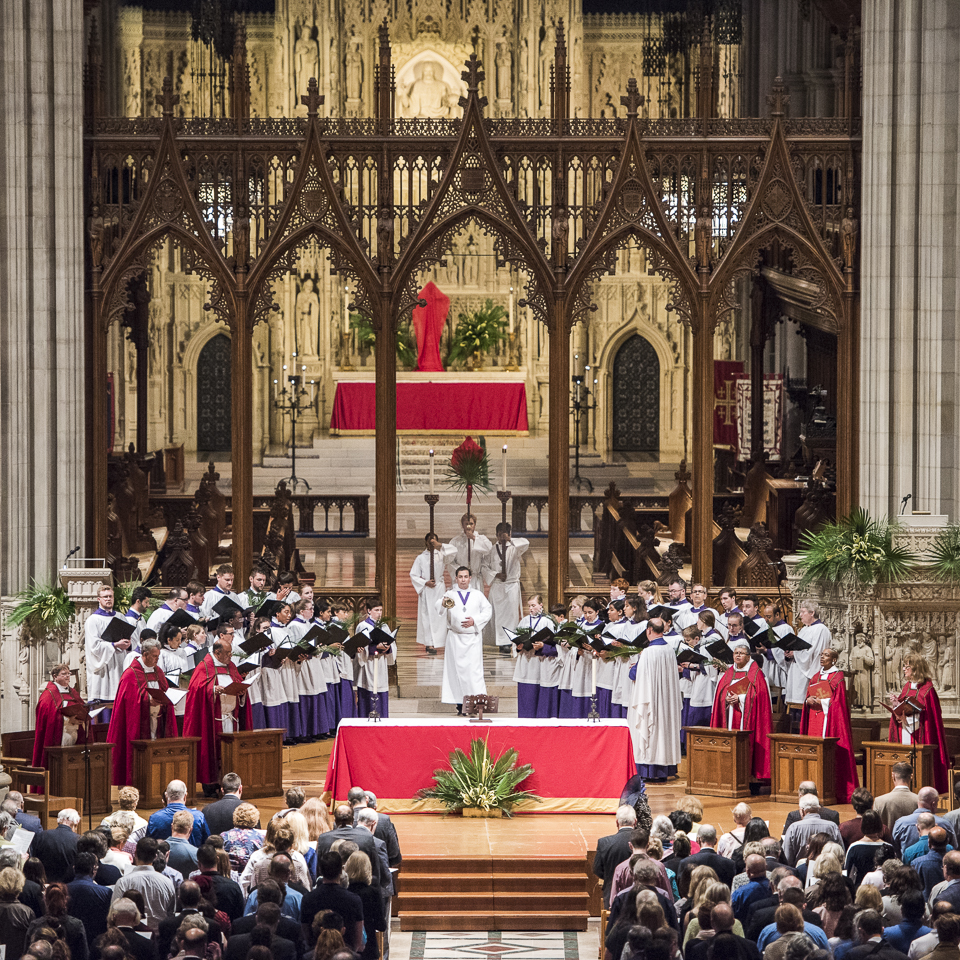
by Scott Sanders
Dozens of people stood in line waiting to have their feet washed. Others, with one or both feet bare and ready to be washed, filled the short rows of chairs near the wash basins. Our clergy were barefoot and on their knees washing the feet of those who came forward. As the Maundy Thursday service continued to unfold, there was a gentleness in the air with those known and unknown to one another navigating a ritual that demands an intimacy beyond most daily interactions.
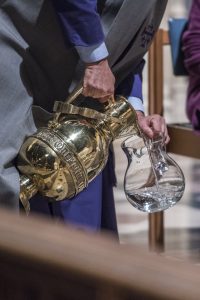
As I moved about to refill pitchers and deliver towels, the kindness in the eyes of one of our congregants as she washed the feet of strangers caught my attention. Though my feet remained dry, her expression washed over me, inviting me to enter into the tenderness of the service.
A small group of college-age friends came forward and joined the line together as the washing neared its end. The Cathedral has a robust twenties and thirties group and we get many younger visitors in large groups, but it’s rare to see a small group of young adults coming to one of our services. Their attendance and participation in this service, which some find awkward or even anachronistic, surprised and gladdened me.
I have participated in this service for the past few years, but something felt different. More people came forward, many regulars, but lots more faces that I didn’t recognize. The same was true on Good Friday as a long line of those seeking to venerate the cross stretched down the nave’s center aisle. In past years, I recall that many who came forward stayed around the periphery praying at kneelers. Not so, this year. Everyone who was physically able, came up to touch and hold onto the cross as they prayed.
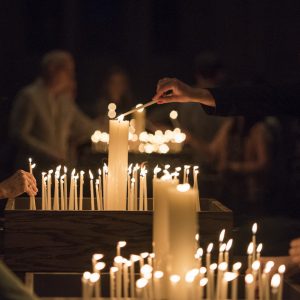
Throughout the days of Holy Week, I was moved to witness the desire of young and old, those familiar and not, to engage in the heart of these liturgies, to feel the rough wood and warm water as tactile reminders of the suffering and grace given for us.
As a verger, I am often on the move on these special days, preparing for the next part of the service, missing parts here and there. Having worked hard with colleagues to plan and prepare, I am especially grateful when I witness the moment when a prayer or a song, a sermon or a ritual moves the entire congregation or just one individual. I am even more grateful when I experience those moments myself.
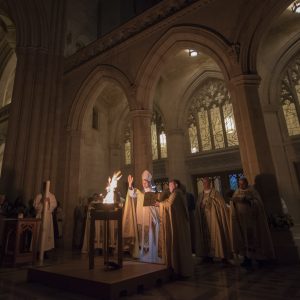
Such was the case as the lights came up and the Gloria was trumpeted at the Great Vigil of Easter. Standing with the acolytes ringing the Sanctus bells, I saw an extra set on the kneeler before me. I rang them with unexpected glee, watching as the clergy rang their bells, faces beaming, a little jig in their step. The deep joy of Easter came over me in that moment, an unexpected reassurance that the light does shine through the darkness.
I had felt the first promise of Easter on Palm Sunday as we processed out at the end of the service. Behind me, as we made our way down the long center aisle, the voice of one of our clergy, deep and resonant, echoed the words of my favorite Easter hymn, “Were you there?”
Were you there when they laid him in the tomb?
Were you there when they laid him in the tomb?
Oh! Sometimes it causes me to tremble, tremble, tremble.
Were you there when they laid him in the tomb?
Joining in, my voice trembled. We were there.
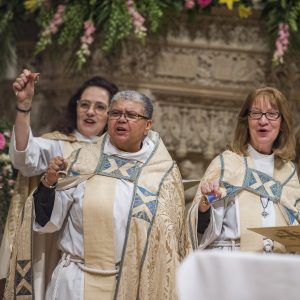
Two thousand years and 5,900 miles away, we were there. Indeed, we are there every day. Not just during Holy Week and Easter, but every day, we are at the cross and the tomb and the resurrection. In every moment, there is suffering and there is light. And in that moment, I knew that with us in the suffering and the light is the love of God in Christ.
It causes me to tremble.
Scott Sanders is a staff verger at Washington National Cathedral following a career working in non-profit organizations with a focus on HIV/AIDS, end-of-life care, and homelessness. A child of the Methodist Church, he was confirmed at the Cathedral in 2014 after a decades-long search for a faith community that spoke to his heart and embraced the LGBTQ community.
All photos by Danielle E. Thomas, Washington National Cathedral

